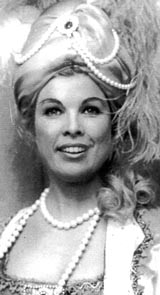Vocal Tools, Tastes & Traditions
Opera is a form of enjoyment and expression. People used to sing opera in the streets of Italy, when the style began, as a form of communication, enjoyment and theater. Let us indulge ourselves in this.
If we talk about tools, taste and tradition for opera, we might need to realize that years ago singers of opera were trained with a foundation of "bel canto," which is a way of vocal production, not just a style of singing. This basis of "bel canto," generally enabled the singers to convincingly sing a wide gamut of vocal styles and vocal expressions and gymnastics, training them also to sing and perform a wide repertoire spectrum.
If we exemplify the Verdi Lyrico Spinto Soprano (Lyric Dramatic Soprano), we would see that Verdi expected the same soprano voice to sing all of his soprano roles- from "La Traviata" to "Aida." And, though each of these specific roles covers specific extremes of Verdi's vocal demands, the repertoire itself exemplifies the technical requirements-fortes and pianos, chest voice, spins and extroverted drama-needed and expected for this repertoire, and the training expected of the singer to be able to sing it.
Surely a singer's particular strengths and interests determined her role choices for the long-term of her chosen vocal "look," but the vocal fundaments and training tools were there to make the choices, thus giving way to a broader casting menu.
If a soprano incorporated styles and repertoire from other nationalities into her performing, additional to Verdi, the same soprano might be found singing Pamina in Mozart's "Die Zauberflöte", as well as Violetta and Aida in Verdi's "La Traviata" and "Aida", and Elizabeth in Wagner's "Tannhäuser"-all in the span of several months-, with no mincing in any of these roles. The training enabled the spin for Pamina and the fioritura and drama for Violetta, and all extremes for Aida, as well as the big thrust for Elizabeth.
If Hitler did any good, it could be said that, in forcing many Europeans to flee him and their homelands-needless-to-say, a horror for those fleeing-, it inadvertently brought the great traditions and cultures of those fleeing into other countries, among them the United States. These traditions spread like a "fan belt" far and wide, establishing a United States cultural standard and musical taste and tradition that monopolized the US and the world table, for many years.
The voice and physical stature of a singer, ideally, was once viewed and determined-for convincing "reading"-from the public's point of perspective. Now, with television having entered our lives, the emphasis has moved to "close-up" scrutiny. Television brings an intimate contact with opera, as it brings opera theater and all singers performing opera on television, into the living rooms of the general public throughout the world. This is meant to be a better than good thing.
It might be worth noting that the performances presented on television are telecasts from extremely large opera rooms (United States opera houses hold 3500 people or more, as a general rule). These performances, then, are not only performed for camera, but must carry to a "live" listening public as well. We want to be sure that the "close-ups "read" well physically, vocally and theatrically on television for the camera, just as they would be expected to read well physically, vocally and theatrically in a large opera room, from afar. We want to answer all needs well, as we are starting a magnificent, far reaching, "fan belt" tradition of our own!




<< Home